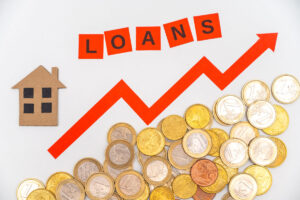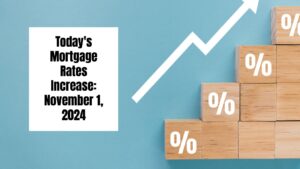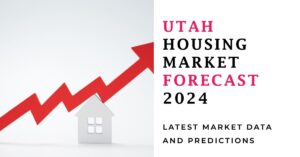While the interest rate is undeniably the headliner, grabbing your attention with its bold numbers, it's just one piece of a complex financial puzzle. Beneath the surface of that seemingly attractive rate can be hidden costs that can significantly impact your bottom line. Here are 3 hidden costs of mortgages you need to factor into your homeownership budget:
3 Hidden Costs of Mortgages You Need to Know About
1. Closing Costs: A Not-So-Small Down Payment You Didn't Know You Needed
Closing costs encompass a variety of fees associated with finalizing your home purchase and obtaining your mortgage. These can range from 2% to 5% of the total loan amount, translating to a hefty sum for most homes. Think of them as a not-so-small down payment you weren't expecting. Common closing costs include:
- Origination Fee: A lender fee for processing your loan application and underwriting the mortgage. Consider it the toll booth you have to pass through to enter the world of homeownership.
- Appraisal Fee: The cost of an independent professional to determine the property's market value. Essentially, you're paying to ensure the home you're about to buy is worth what you're paying for it.
- Title Search and Insurance: Fees to ensure the property's title is clear and to protect you from ownership claims. This is like paying for a guarantee that you're truly buying the house and not inheriting someone else's legal troubles.
- Escrow Fees: Prepayment for property taxes and homeowner's insurance, held in an escrow account managed by your lender. Think of it as setting aside some money each month to cover these annual expenses, ensuring you have the funds readily available when the bills come due.
- Recording Fees: Government charges to register the deed transfer in your name. These are the administrative fees associated with officially becoming the owner of the property on paper.
The Takeaway: Don't be surprised by closing costs at the eleventh hour. Ask your lender for a Loan Estimate (LE) upfront, which details the estimated closing costs associated with your loan. This allows you to factor them into your budget and potentially negotiate some fees with the lender or seller. By being proactive, you can avoid turning the closing table into a financial ambush.
2. Private Mortgage Insurance (PMI): A Necessary Evil You Might Eventually Outrun
If your down payment is less than 20% of the home's purchase price, you'll likely be required to pay PMI. This monthly premium protects the lender in case you default on your mortgage. While PMI can feel like an extra burden, it allows you to purchase a home sooner and build equity over time. Think of it as training wheels on your homeownership journey – a temporary support system while you build your financial foundation.
The Takeaway: Explore options to minimize PMI. Consider saving for a larger down payment to avoid PMI altogether. Some loans offer PMI cancellation once your home equity reaches 20%. By strategically increasing your down payment or diligently paying your mortgage on time, you can eventually shed the burden of PMI and enjoy a lower monthly payment.
3. Property Taxes and Homeowner's Insurance: Yearly Investments in Your Homeownership Journey
Property taxes and homeowner's insurance are ongoing expenses of homeownership, often not factored into initial affordability calculations. These are the yearly bills that never seem to go on vacation. Property taxes vary by location and are based on the assessed value of your home. Homeowner's insurance protects your property against damage and liability. Consider them the annual investments you make to secure and maintain your piece of the American dream.
The Takeaway: Research average property tax rates and homeowner's insurance costs in your desired area before purchasing. Factor these annual costs into your budget to ensure long-term affordability. By understanding these ongoing expenses, you can avoid financial strain down the road and ensure your homeownership journey remains a source of joy and stability.
Going Beyond the Numbers: Building a Sustainable Financial Future for Your Home
Looking beyond the headline rate requires a shift in mindset. Instead of focusing solely on the initial cost of the mortgage, consider homeownership as a long-term financial commitment. Here's how to approach this strategically:
- Factor in Future Expenses: Think about potential future costs like maintenance, repairs, and potential renovations. Homes require ongoing upkeep, so budgeting for these unforeseen expenses is crucial. Unexpected issues, like a leaky roof or a failing appliance, can wreak havoc on your finances if you're not prepared.
- Plan for Property Tax Fluctuations: Property tax rates can fluctuate over time. Research historical trends and factor in potential increases when calculating affordability. Don't get caught off guard by a sudden property tax hike that throws your budget out of whack.
- Consider Long-Term Interest Rate Trends: While you can lock in a fixed rate for your mortgage, it's wise to be aware of broader economic trends. If interest rates are expected to fall significantly in the coming years, you might consider an adjustable-rate mortgage (ARM) – though this comes with its own risks. Consulting a financial advisor can help you navigate these complexities and choose the mortgage product that best suits your long-term financial goals.
The Bottom Line: Knowledge is Power
By understanding the hidden costs of mortgages and planning for ongoing expenses, you can make informed financial decisions that ensure a smooth and successful homeownership journey. Remember, your home is more than just a place to live; it's a significant financial investment. Take the time to educate yourself beyond the interest rate and build a solid financial foundation for your future.











